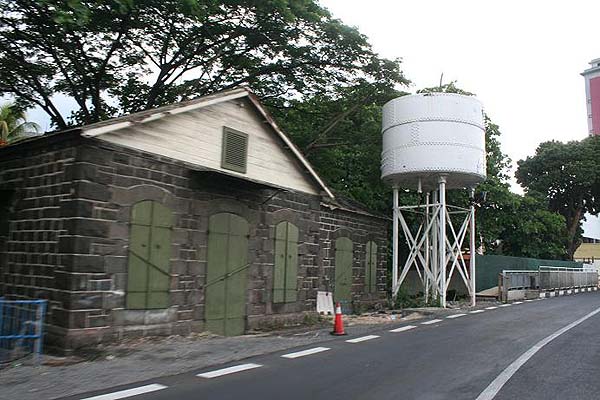|
Mauritius Government Railway (MGR) Remains 2012 |
|||
|
Matthew Coomber lives on the island and he has a vast archive of material which goes much further than is shown here, check out https://www.flickr.com/photos/historicmauritius/collections/72157711434865346/ (added 21st October 2019). Thomas Kautzor reports on his visit from 4th to 7th February 2012. For a 2008 visit, please see Dean Sullivan's report. Thomas also reported on preserved narrow gauge items. The two ex-MGR locomotive boilers at Bois Chéri Tea Estate (west of Curepipe) were both seen. The museum and factory can be visited Mo-Fr 08.30-16.30, Sa 08.30-14.30. According to the signboard next to it, the boiler inside the museum came from an F class locomotive with construction N°. 4268 built in 1925 which was bought from the MGR in 1961 and used as a stationary boiler inside the factory from 1968. It obtained its last boiler certificate from M.J.A. Martin in 1982. The whistle of the second boiler in the factory’s boiler room is normally fed by steam from the factory’s main boiler.
The four-wheel Governor’s coach (numbered A 66) and the body of the four-wheel passenger coach were seen outside the National History Museum in Mahébourg (open Mo/We-Sa 09.00-16.00, Su 09.00-12.00, closed on Tu), both still in decaying condition. Inside the museum a 1/4 –size model of a four-wheel double-decker coach said to have been in use from 1864 until 1926 is on display on the second floor.
The body of another four-wheel coach, in good condition, is used as accommodation at the old Moulin Cassé Sugar Estate in Grand Baie in the north of the island. A drawing of it appears in the “Mauritius Sketchbook”, on sale in tourist shops all over the island. There is a private gallery on the property and it is open to the public on Fridays 10.00-18.00 or by appointment (tel. 263 0672 or 727 0672). A book (in French) has recently been published on the MGR:
It contains a lot of old photos of locomotives and trains. It is on sale in bookshops on the island for MRU 1600. The author is the owner of the Musée de la Photographie, 5 rue du Vieux-Conseil, in Port Louis (open Mo-Fr 09.00-15.00, http://musee-photo.voyaz.com/index.htm (Link dead by May 2023)) and the book draws mainly on the museum’s photo collection. Mr. Bréville is an active railfan and tried to buy a locomotive in India “of the same type as the ones that were once used in Mauritius” to put on display in front of the museum. Sadly the project failed because of the high cost of transporting the locomotive to Mauritius. He has now set up a project to signpost the old MGR railway lines so that they can be hiked. A small layout designed by Pierre-Yves Pougnet depicting Le Réduit station, with MGR F class 0-6-0T N°. 26 heading a passenger train, is on display inside the museum.
The Mauritius Postal Museum at Caudan Waterfront, Port Louis (open Mo-Fr 09.30-16.30, Sa & hol. 10.00-16.00, http://www.mauritiuspost.mu/postal-museum) has a room dedicated to the MGR. Exhibits include a board detailing the history of the railways, a large map of the MGR network, old photos and enlargements of the four stamps issued in 1979 to illustrate Mauritius’ railway heritage:
Another stamp (40cs) from 1998 depicts a passenger train on the Rivière des Anguilles viaduct. Also on display is a trolley used to transport bags of mail to and from the trains. Most MGR railway stations on Mauritius doubled as post offices and a number survived as such. One such station is Mapou (north of Port Louis), which has now been signposted as “Site Earmarked for Railway Museum Project” for the past 15 years by the Mauritius Museums Council (part of the Ministry of Arts & Culture). The site includes the old station building (still used as a post office), the goods shed and the iron water tank mounted on a masonry structure. Except for the post office, the entire site has recently been fenced off, but shows no signs of any further progress. Next to the runabout facing the station area, the “Railway Snack” and “Le Train du Nord” bar a reminders of the former presence of the railway.
Other surviving MGR structures seen on the island include:
|
|













